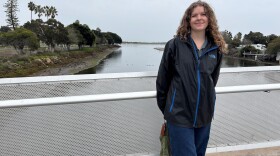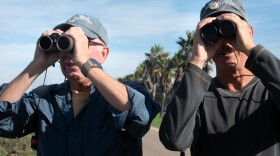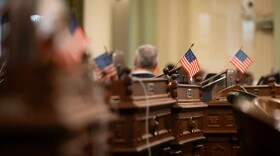Jose Iturriaga taps into his imagination to create moody images of dark skies and landscapes of magical horror. His style has allowed him to work as an illustrator and movie set designer. But something is trying to copy his distinct artwork. The copycat is artificial intelligence.
“What the AI training models do is scrape all of the internet, basically everything up and down, and basically steal all this art and then put it into a blender and something else comes out,” Iturriago said.
He adds what comes out of the generative AI blender can be the very same images or ones that replicate the artist's style. He said you can tell when an artist’s style has been copied.
Media companies making ads or animation are always looking for a cheaper way to produce, and using AI is cheaper than hiring artists. The software that combs the internet for data are called AI crawlers. And those programs can undermine an artist's present earnings and their long-term career.
“As the crawlers steal from them in the present, the data that they take is used to replace them and devalue them in the future,” said Deana Igelsrud, with the Concept Art Association.
There are ways of preventing it. One way is a program called Glaze. It makes digital changes to the images that are barely perceptible to the human eye. But it prevents AI from recognizing the image and absconding with it. Iturriaga uses it for his art online.
Researchers in cyber security at UC San Diego surveyed independent artists in a new study. They found nearly all of them wanted AI to stay away from their images. But most had little knowledge of technical ways to do it. They didn’t know how to use them or didn't know they existed. Like robot exclusion protocols built into a website's source files.
“This is something that tells an AI crawler to stay away from a particular webpage. And I think over 60% of the artists we interviewed actually didn’t even know about this alternate mechanism,” said Elisa Luo, a PhD student who co-wrote the UCSD study.
Luo said some companies’ web crawlers respected the instructions of such protocols but some did not. She said the software company Cloudflare has a free program that can block web crawlers from an artist’s website. But it could be just another step in an Internet arms race.
“It will, of course, always be a cat-and-mouse game. Like if Cloudflare comes out with this new feature that is even more comprehensive and sophisticated, then the more malicious AI crawlers will try to adapt to this and try to circumvent it,” Luo said.
Lawsuits are a part of the picture.
Disney has sued Midjourney and its AI-powered image generator for copyright infringement, alleging they copied Disney characters without permission.
San Diego artist Patrick Ballesteros is an artist whose whimsical, childlike images have made him well-known to visitors at Comic-Con. He said he’s seen colleagues’ removed from projects, and wonders if theft of their artistic style was the root of it.
He said ethical AI companies can definitely play a role in the industry. For instance, helping an animation artist with the tedious work of doing “in-between” poses.
“There’s someone who does, like, key poses. My arms are up. My arms are down, and there’s someone else that has to animate every little pose in-between,” he said. “So they use the AI to create those in-betweens. Does that take someone’s job? Yes it does. However, the main artists going into this are aware of what they’re using it for and it’s with their permission.”
Igelsrud said the Concept Art Association is lobbying for a bill in the California Legislature, AB 412, which she calls the AI Copyright Transparency Act. It would require that artists be told if their work has been put into a generative AI data set.
Speaking of an artist she knows, she said AI is not something that helps artists.
“His livelihood (was) basically stolen by an algorithm that facilitates forgery and theft,” she said.
She hopes that between laws, lawsuits and the right technology, AI can become a legitimate part of the business of commercial art.





